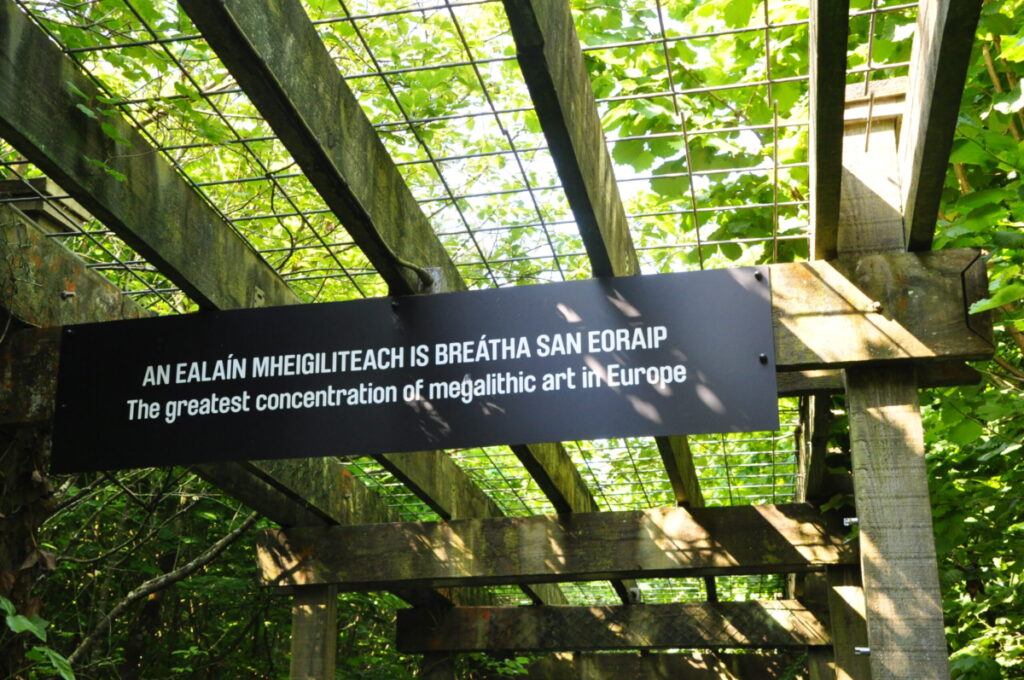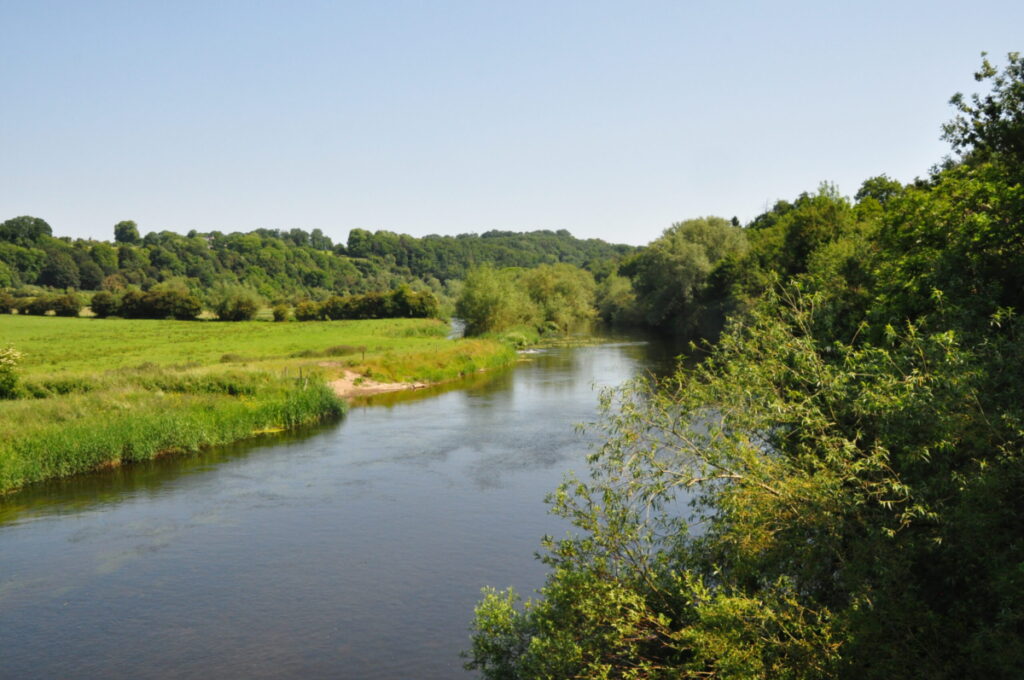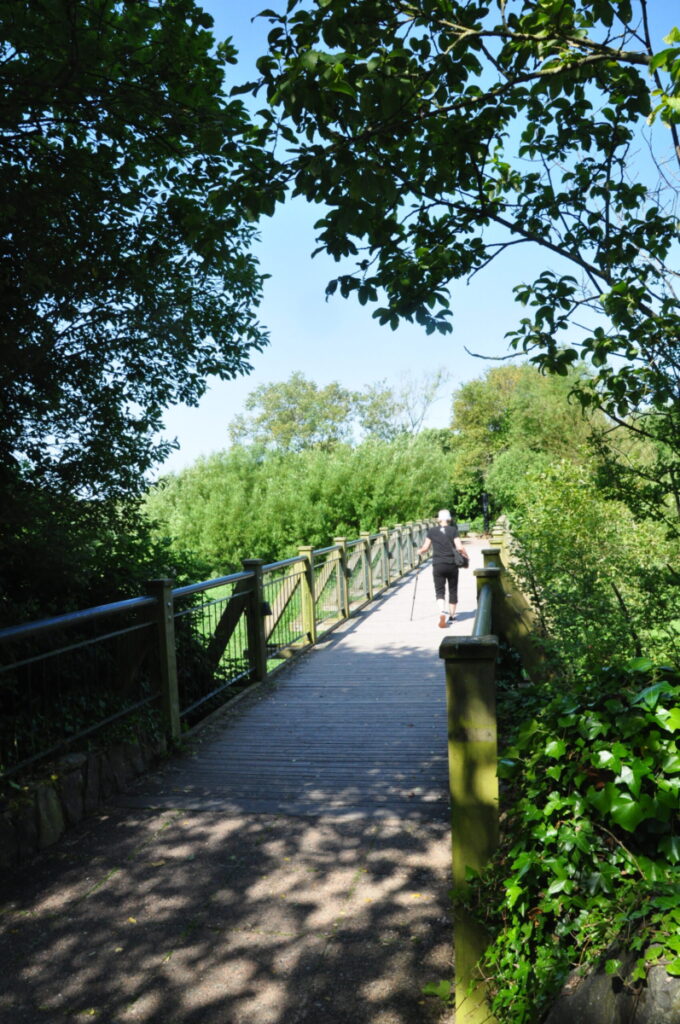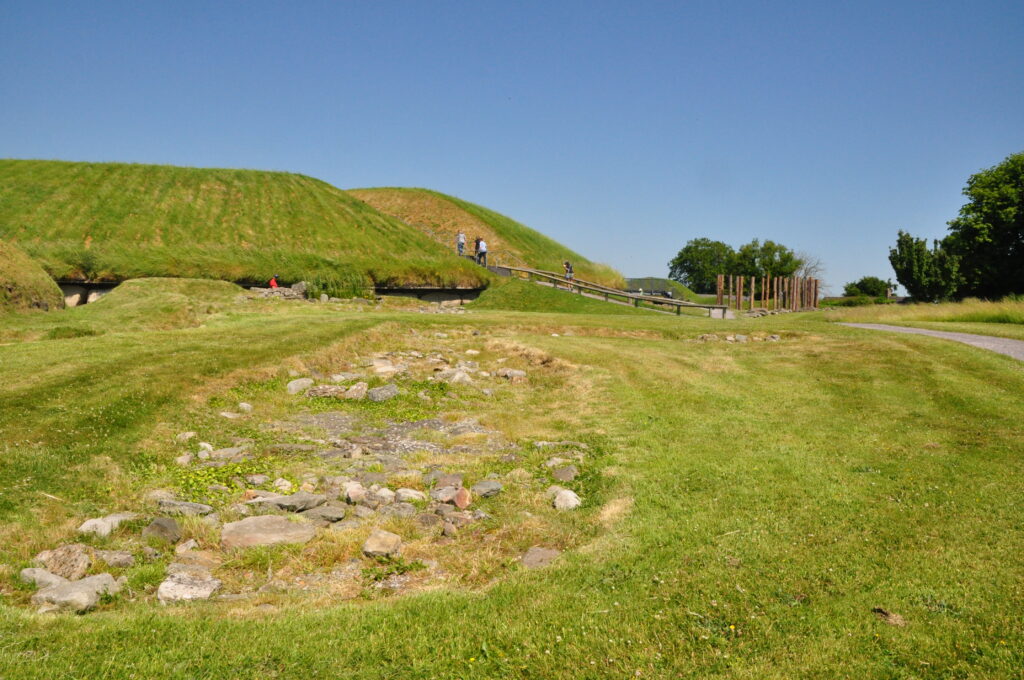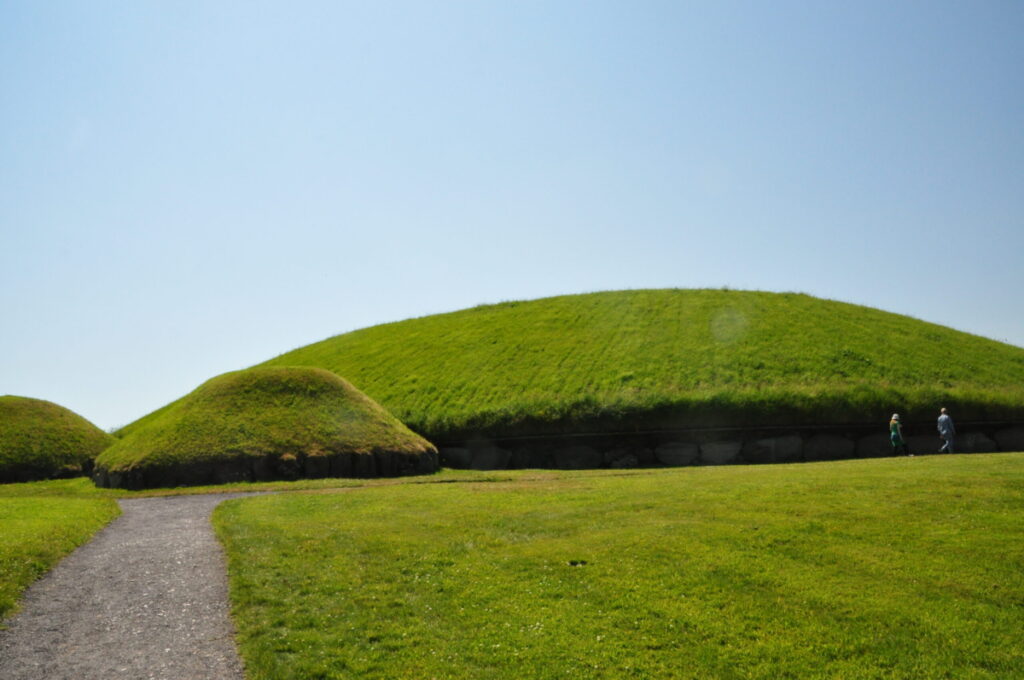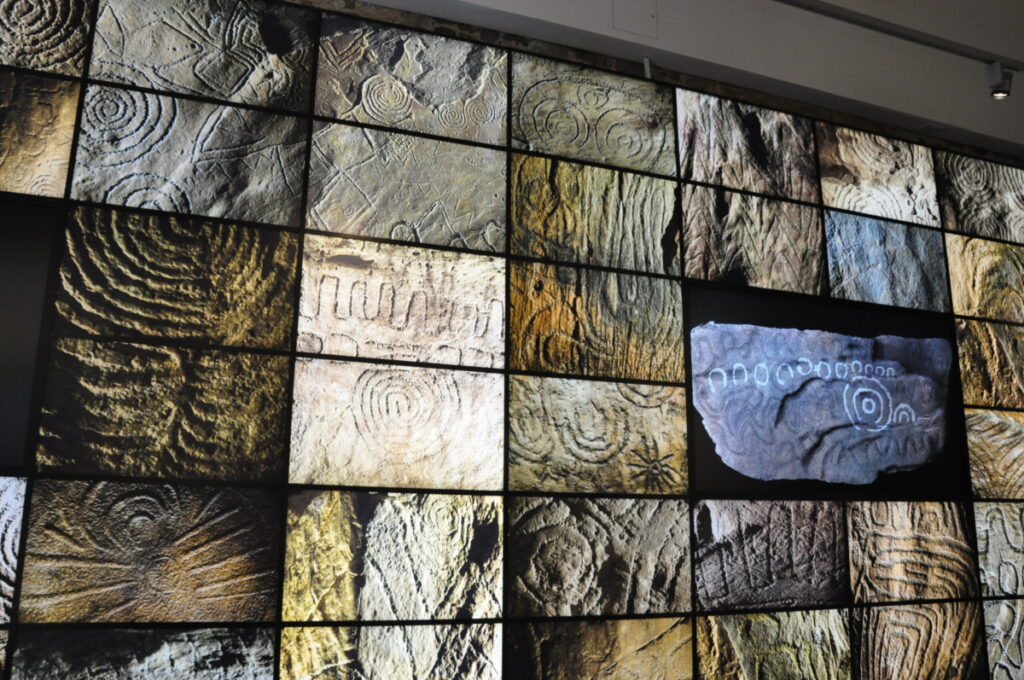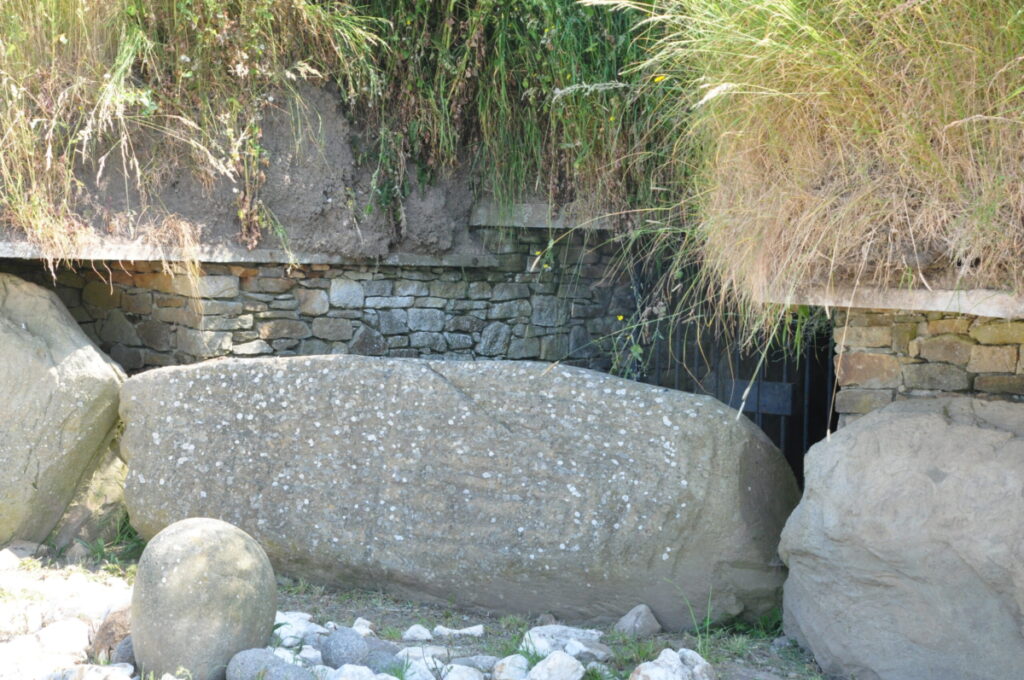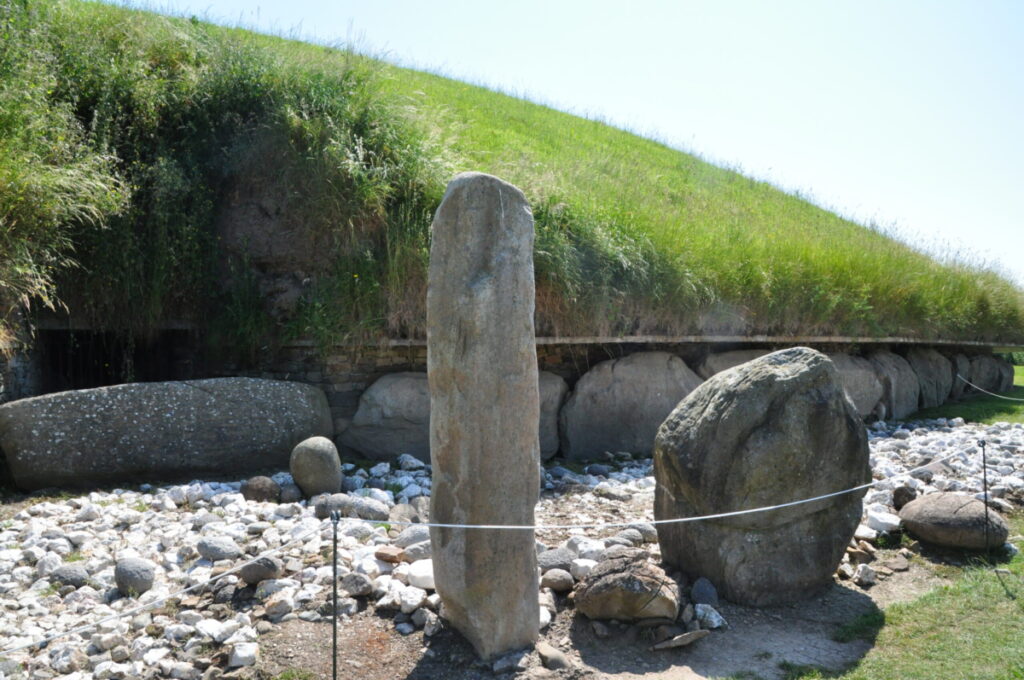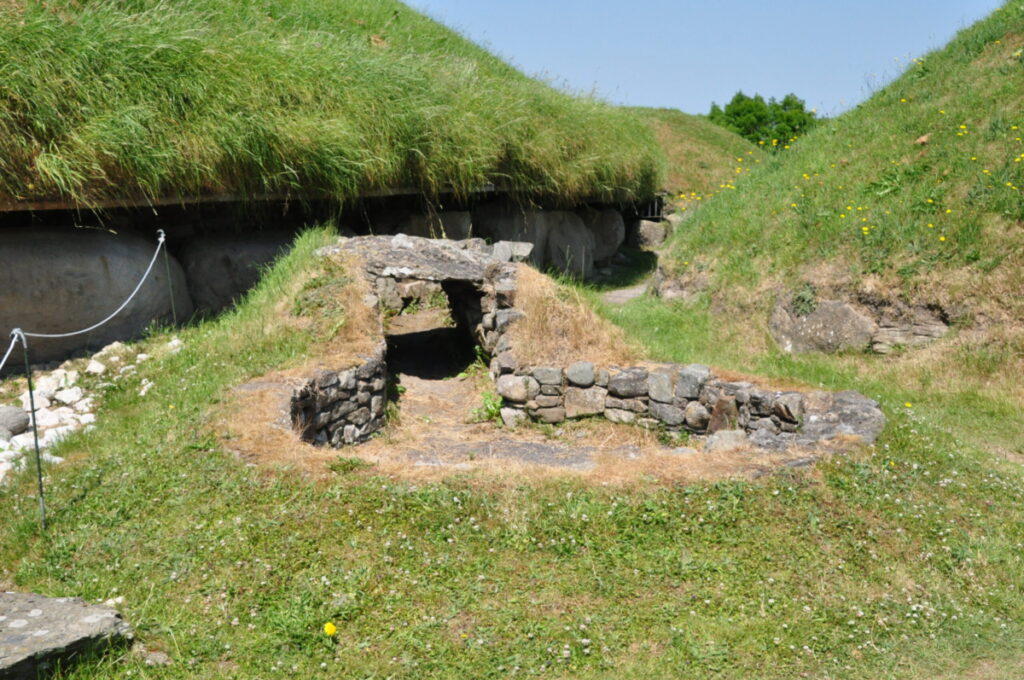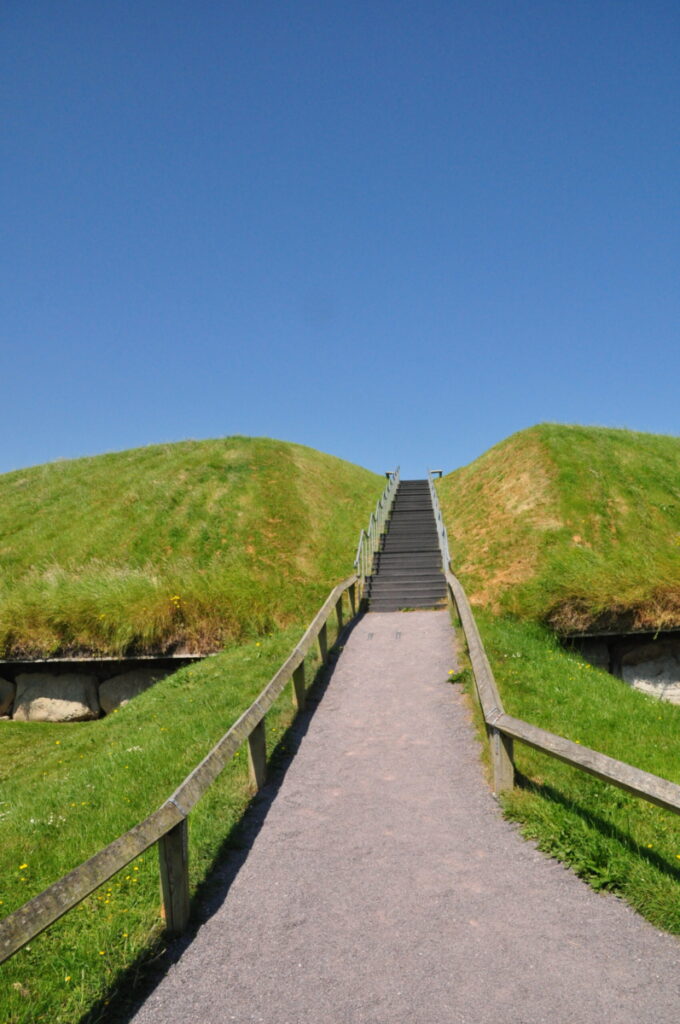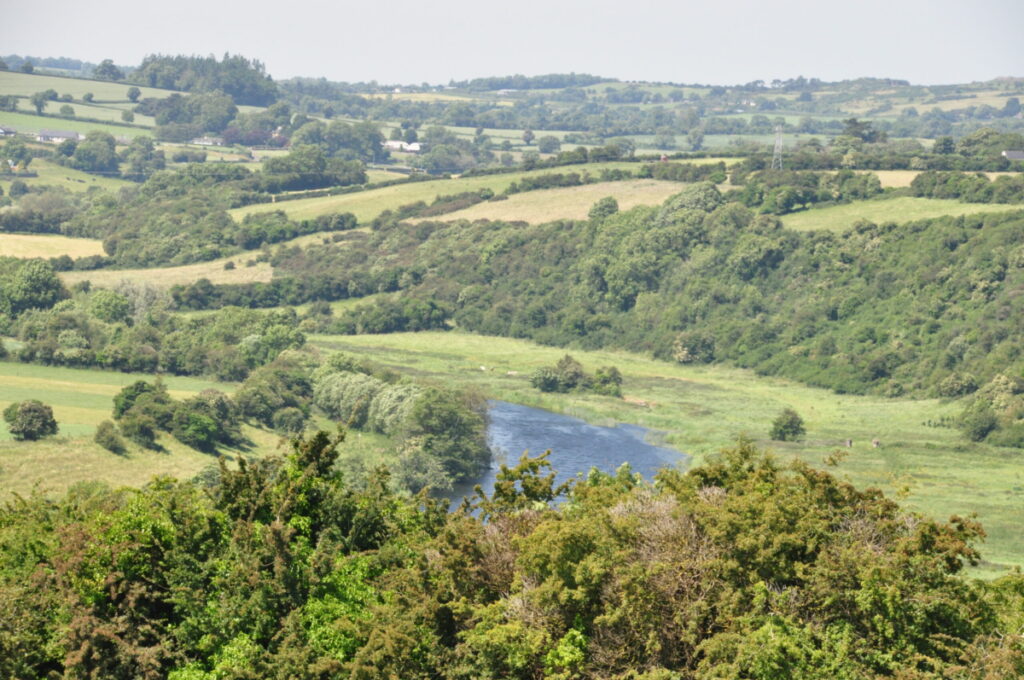One of the most amazing highlights of the trip has to be these passage tombs in a bend in the River Boyne. The size of the stones and the intricacies of the carvings would be impressive if done in modern times. To have been done in the Neolithic period almost 5000 years ago with only manual labor is mind boggling. Details here. The visitor center opened in 1997 and is phenomenal. The exhibits are clear and really well done. Not only the visitor center is full of information, but everywhere you walk they have included pictures, drawings, video, etc. It is somewhat overwhelming but so fascinating that one doesn’t want to miss anything!
At Knowth, the site we visited (more here), there are at least nineteen smaller tombs near the main tomb. It is thought that they were built first, and the knowledge gained allowed construction of the larger tomb. While not the largest, Knowth is the most intricate and probably the last of the three large tombs to be constructed. As you can see below, the tombs were almost completely buried and some have been reconstructed. The fill dirt on top of the main tomb slid down over the kerbstones obscuring the construction. It appeared to be a large mound of dirt. Locals thought it had some significance, but were not sure what until excavation began in the 1960s.
Bob really couldn’t capture the immensity of Knowth. The smaller tomb (above right and below left), tiny compared to the main tomb. Some of the smaller are as large as 20 m (65 ft) in diameter and 3 m (almost 10 ft) high.
